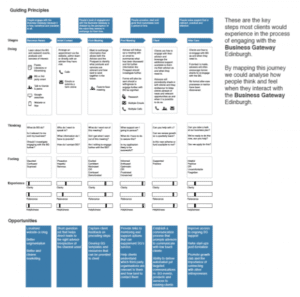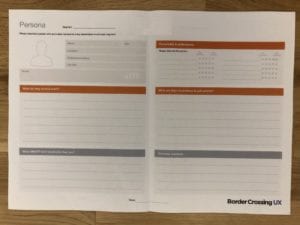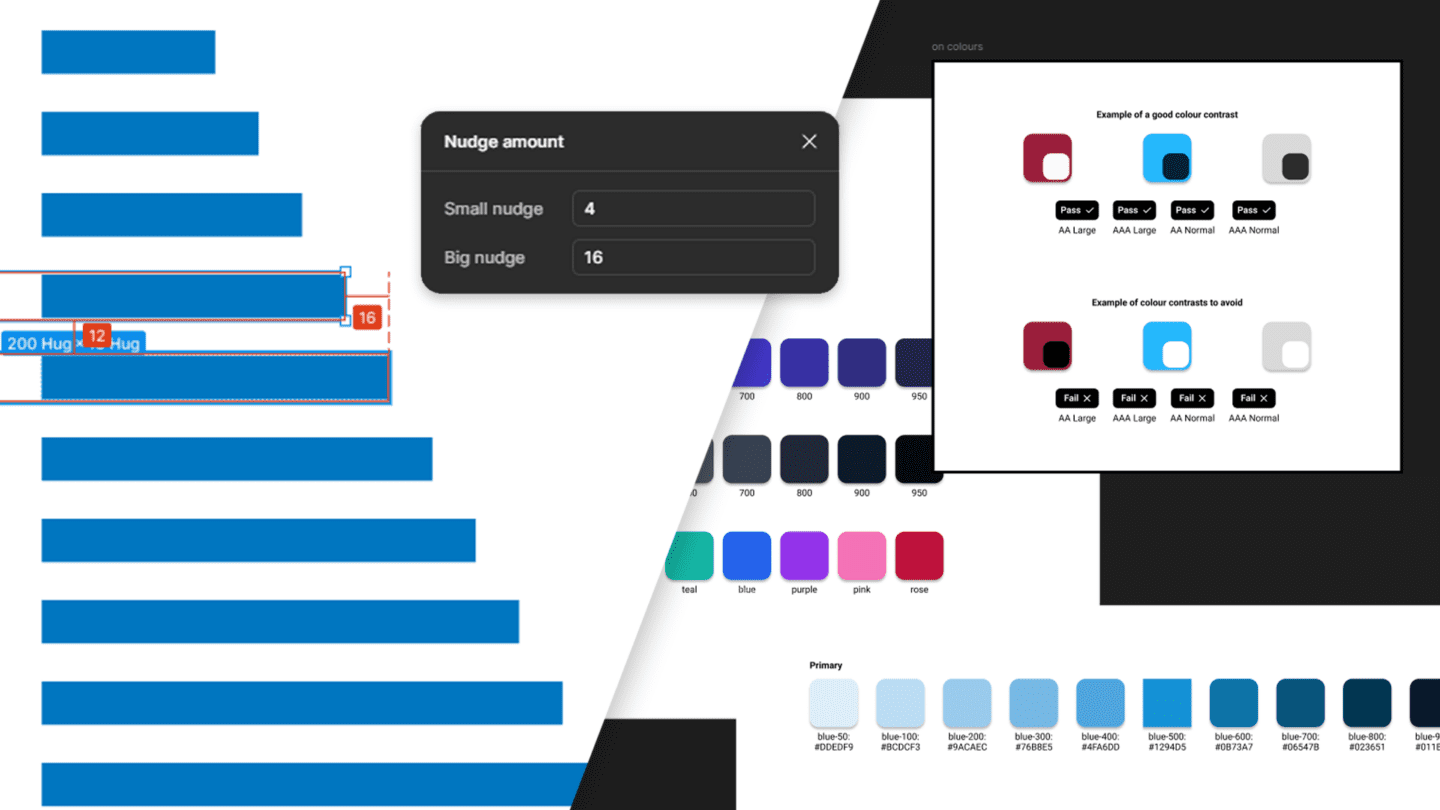Customer journey mapping is key to delivering an excellent customer experience, whether you operate online or not. It allows you to identify what your customers need, desire and feel when they interact with your company. They help you identify gaps in your experience, as well as opportunities to retain customers.
What is Customer Mapping?
Customer mapping or customer journey mapping was defined by Bernd Schmitt as:
Documents that visually illustrate customers’ processes, needs, and their perceptions throughout their relationships with a company.
But what does that actually mean?
Well a customer map is basically a diagram or flowchart of the touch points and interactions a customer or prospect has with a company. This is then layered with their emotions, needs, desires and fears. It is the blueprint of their journey from awareness that you exist, right through to the end of your relationship with them.
Customer maps can take many different forms and the key to a good one is that it helps you understand the experiences, thoughts and feelings of your customers in their language.
For a map to be accurate you will need to base it on key personas that are representative of your key customer segments.

A good map should be based on robust statistical and anecdotal evidence to ensure you understand what people are doing. But also the more important questions: why are they doing it, and how does it make them feel?
To deliver a consistently good experience you need to understand how your processes and interactions impact people’s perception of your company. By understanding what people do and why at any stage in your customer lifecycle you can identify the gaps and opportunities you have in your current set up. By resolving these you can enhance their experience and help them seamlessly progress through your sales filter.
5 reasons to map your customers
The beauty of customer mapping is that you can choose to map broad behaviours of your audience or focus on a specific segment of your audience (for example high value customers, customers who aren’t engaged, key target customers) or on a specific part of your interaction to see what is going wrong (for example the checkout process or sign-up process).
Whether you are looking at it through a broad or a narrow lens there are 5 things that every customer map will help you do:
- Effectively deal with customers: learn when and how they want to interact with you to develop a truly compelling customer service proposition.
- Minimise negative experiences: by understanding where the pain points are in your processes for customers you can take steps to resolve them.
- Retain customers: if you can understand why customers are switching or leaving in the ‘end of the relationship’ phase you can put measures in place to stop them.
- Increase efficiency: mapping out a process should let you see where there is duplication of effort on the part of the customer or the company, this can lead to substantial operational savings.
- Be consistent: take lessons learnt from one customer touch-point and apply them to others to ensure that you deliver a seamless experience across channels.
Brand perception is often talked about in terms of messaging, imagery and promotion. But it’s so much more than that. Today brand perception is influenced by an amalgamation of these factors coupled with the experience customers actually have when they interact with a company.
To make things even more complicated it isn’t just first-hand experiences we need to consider. Consumers still value word of mouth recommendation (or criticism) above all else. And given the increasing number of channels consumers use to share their thoughts, you really can’t afford to deliver a bad experience!
Customer mapping top tips
There are many different ways to map your customer journeys and lots of different diagrams (a quick Google image search will confirm this!). So, the process you should use will often depend on your company’s maturity and the amount of customer data that you can collect or have access to.
That said, there are 4 tips that I would recommend to any business when starting a customer mapping exercise:
1. Objectives, objectives, objectives
If you hadn’t guessed from the above, set some objectives for the exercise as this should determine your approach. For example, if you want to find out why people are abandoning your check out process then you probably only need to map that part of the journey. But if you want to learn how your customers perceive your company you will need to map out the whole journey.
Some useful objectives to start out with are to:
- Understand how our company is perceived
- Work out where there are gaps in our service that are hindering our customers
- Learn why X [a specific customer segment] perceives us a providing a good/bad experience
- Discover where we can be more efficient in our customer service
- Identify cross-selling and up-selling opportunities
- Understand why our customers leave us at this stage
- Uncover what we do well and what we don’t do well in the eyes of our customers
Set your own objectives and this should inform:
- How much of the journey you need to map
- Which customers you need to focus on.
This will also help you not get lost in the detail of every interaction and touch-point if it isn’t necessary or informative for your objectives.
2. Research for accuracy
All good customer maps start with good research. The amount that you do will often depend on your access to customer data and your budget. But whatever your budget you should start with a proto-persona that is representative of a particular customer segment. A proto-persona should contain:

Name, role and purpose
This section should clearly articulate:
a) Name
b) Location
c) Role – e.g. an advanced learner
d) Purpose – type of user (or rather context of use, e.g. International student in India looking to improve their English prior to commencing an undergraduate degree).
Behavioural /Demographic Information
Try to focus on demographic information that predicts a specific type of behaviour. For example, there may be cases where the persona’s age is totally irrelevant yet their access to a specific device, such as an iPhone, will completely change the way in which they interact with your product.
Pain points and needs
This section should clearly articulate:
- A person’s needs and pain points with the current product or situation
- The specific pain points your product is trying to solve and/or the opportunity you are trying to address
Potential Solutions
This section should clearly articulate:
- Potential solution for the needs identified in section 3
- Capture feature and solution ideas.
Once you have your persona in mind you can start mapping out what they do based on the information above. This should be combined with real or contextual evidence – both statistical (from your analytics, sales logs, CRM etc) and anecdotal (from real customer feedback, in their own words). By layering the journey with this information, you can gain a greater understanding of what is happening at each stage.
3. Cross-functional teams
I am a big believer in building cross-functional teams. I think a cross-functional team built up of people with different skills and experiences mean that you will ultimately get a better, well rounded output.
Customer mapping requires people with first-hand knowledge of both how the business processes work and what the customers want. Therefore, you need to have a bunch of people in the room who fundamentally understand each stage from both a business and a customer perspective. Getting your customer facing staff and operational staff in a room together and discussing what needs to happen will uncover some real insights. As well build empathy across departments.
4. Test, test, test
Once you have mapped out your journey test it!
This could be conducted formally with real customers.. Or informally, where you ask your customer facing staff to ask questions like:
- ‘How did you find out about this product?’
- ‘Did you think that the website was easy to use?’
- ‘Did you think that the process of getting X was easy? If not, how could we make it better?’
If you don’t have the opportunity to ask representative customers then test it yourself. Get into the mindset of your customer and try to complete all of the tasks that you’ve mapped out. If possible, using the device or method that they would. This should show the blockers in the journey and give you a deeper understanding of the frustrations your customers face.
Want to know more?
Customer mapping is a key user experience (UX) technique and we’re certainly big believers in the insights it can deliver.
So, if you have any questions about the best way to approach mapping your customers or improving your customer touch points then get in touch. Or sign-up for one our Customer mapping training courses which will be held on the 6th of May or 12th of June, as part of The Creative Exchange Masterclasses.


